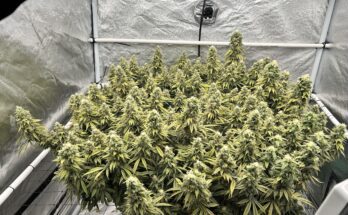Hashish, an ancient cannabis concentrate revered for its potency and cultural significance, has woven its way into the fabric of Canada and North America’s history. From indigenous traditions to modern legalization, the evolution of hashish reflects the complex interplay of culture, trade, and policy in the region.
Indigenous Roots:
Long before European colonization, indigenous peoples across North America cultivated and used cannabis for medicinal, ceremonial, and spiritual purposes. While historical records specifically detailing hashish are sparse, indigenous communities likely possessed knowledge of methods to concentrate cannabis resin, potentially creating early forms of hashish.
Colonial Influence:
The arrival of European settlers in North America brought about significant cultural shifts, including the introduction of new crops and customs. Cannabis, with its diverse uses, became intertwined with colonial economies and societies. However, attitudes towards cannabis varied among different colonial powers, with some embracing its utility and others demonizing its use.
Global Influences:
The 19th and 20th centuries witnessed waves of immigration from regions where hashish was traditionally consumed, such as India, Afghanistan, and the Middle East. With these migrations came the introduction of hashish culture to North America, enriching the local cannabis landscape with new traditions, consumption methods, and products.
Counterculture Movements:
The 1960s and 1970s saw the rise of counterculture movements across North America, characterized by a rejection of mainstream values and an embrace of alternative lifestyles. Cannabis, including hashish, became emblematic of these movements, symbolizing freedom, rebellion, and spirituality. Urban centers like Vancouver, Toronto, and Montreal emerged as hubs of cannabis culture, where hashish was readily available in underground markets.
Prohibition and Underground Markets:
Throughout much of the 20th century, cannabis, including hashish, remained illegal in Canada and the United States. Prohibition fueled the growth of underground markets, where hashish was produced and distributed clandestinely. Despite legal barriers and societal stigma, the demand for hashish persisted, driven by its potency and cultural allure and being able to access hash. Now with its legalisation, You can purchase from websites like www.buyhashonline.com and others.
Modern Legalization:
The landscape changed dramatically with the legalization of cannabis for medical and recreational purposes in Canada and several U.S. states in the 21st century. Legalization has brought about a shift towards a more open and regulated cannabis market, including hashish products. Licensed producers now offer a variety of hashish options, ranging from traditional to innovative extractions.
Looking Ahead:
As attitudes towards cannabis continue to evolve and legalization spreads, the history and legacy of hashish in Canada and North America undergo a new chapter. From indigenous traditions to modern legalization, hashish remains a testament to the enduring cultural significance of cannabis in the region, bridging past and present in the ever-changing landscape of cannabis culture.
In conclusion, the journey of hashish in Canada and North America is a tale of cultural exchange, prohibition, and resilience, reflecting the dynamic relationship between society and cannabis throughout history.



